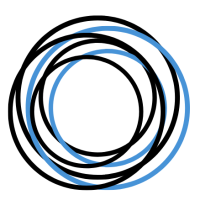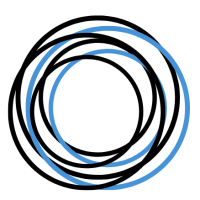
Lately, I’ve been preparing some updates of training materials. In doing so, I’ve gone back and re-gathered old information from original sources once again, as I have done before. This time, it’s been especially interesting.
See what you notice in comparing the definition of addiction from ASAM in 2011, the DSM-5 in 2013, and from ASAM again in 2019.
First, here’s the ASAM short definition from 2011.
Addiction is a primary, chronic disease of brain reward, motivation, memory and related circuitry. Dysfunction in these circuits leads to characteristic biological, psychological, social and spiritual manifestations. This is reflected in an individual pathologically pursuing reward and/or relief by substance use and other behaviors. Addiction is characterized by inability to consistently abstain, impairment in behavioral control, craving, diminished recognition of significant problems with one’s behaviors and interpersonal relationships, and a dysfunctional emotional response. Like other chronic diseases, addiction often involves cycles of relapse and Remission Without treatment or engagement in recovery activities, addiction is progressive and can result in disability or premature death.
Doing some digging, while looking for that old 2011 ASAM definition, I found this (on 10/26/2020):
This policy statement is archived and no longer considered active ASAM policy. Archived statements are available for historical purposes upon request.
I’ll bring in a more recent statement from ASAM later in this post. But next in chronological order is the statement from the American Psychiatric Association’s DSM-5 in 2013. I added the boldface to the word “addiction” so it’s easy to see.
Note that the word addiction is not applied as a diagnostic term in this classification, although it is in common usage in many countries to describe severe problems related to compulsive and habitual use of substances. The more neutral term substance use disorderis used to describe the wide range of the disorder, from a mild form to a severe state of chronically relapsing, compulsive drug taking. Some clinicians will choose to use the word addiction to describe more extreme presentations, but the word is omitted from the official DSM-5 substance use disorder diagnostic terminology because of its uncertain definition and its potentially negative connotation.
And now, back to ASAM. Here’s the current formulation of the ASAM addiction definition (2019):
Addiction is a treatable, chronic medical disease involving complex interactions among brain circuits, genetics, the environment, and an individual’s life experiences. People with addiction use substances or engage in behaviors that become compulsive and often continue despite harmful consequences. Prevention efforts and treatment approaches for addiction are generally as successful as those for other chronic diseases.
I’ll share some of my thoughts, and one final approach to defining addiction.
Overall, I’m content with the ASAM 2011 definition, but I wish it said addiction was “…a primary, chronic bio-psycho-social-spiritual disease involving brain reward, motivation, memory and related circuitry. Dysfunction in these circuits leads to characteristic biological, psychological, social and spiritual manifestations.” As it sits, the ASAM 2011 definition makes addiction merely a brain illness with whole person manifestations.
With the DSM-5 I notice they state addiction is a term used to “describe severe problems related to compulsive and habitual use of substances” and forbid us diagnosing it. I wish the phenomenology of addiction was a disorder we were permitted to find – a qualitatively different problem from only quantifying the number of criteria we count. After all, some people do suffer from this problem.
Looking at the ASAM 2019 definition, I find the first sentence not very helpful. It seems to me that many disorders are a “treatable, chronic medical disease involving complex interactions among brain circuits, genetics, the environment, and an individual’s life experiences” and this does not add much.
Where else can we look?
Readers of Recovery Review might recall work by Norm Hoffmann I have featured previously toward his attempt to answering the question, “What is addiction?”
Here is the bottom line:
In short, Norm Hoffmann has examined the relative weight of each of the 11 DSM-5 SUD criteria, separately, as applied to the probability of having any one or more additional positive criteria for SUD (from data collected on thousands of consecutively incarcerated individuals).
He asks which DSM criteria for SUD are found primarily in severe SUD’s?
Norm’s answer:
- Efforts to control/cut down but unable (rule setting),
- Craving with compulsion to use,
- Failure to fulfill role obligations,
- Activities given up or reduced,
- Withdrawal.
That is to say, in his sample, the presence of any one of these 5 criteria, separately, was more likely than not to be present among 6 or more total positive SUD criteria for any one individual.
In presenting these results from his research, Norm has asked if perhaps the total constellation of The Big 5 is what is commonly called the “disease of addiction”.
Interestingly, Norm has also noted the individual may fit mild or severe characteristics (aside from DSM scaling), based on The Big 5, and as a result he has expressed the following questions:
- Are those with mild to moderate DSM ratings without any of the Big 5 able to moderate use with less intense and briefer services?
- What are the implications of The Big 5 for etiology and course of illness of the individual?
- Specifically, do those that are positive on 2 or more of Big 5 in fact require initial residential placement and/or more intense and longer care, and require abstinence – even when not numerically “Severe” according to DSM-5?
For the curious, here is the link to the full text of that earlier post with more from Norm on the matter.
